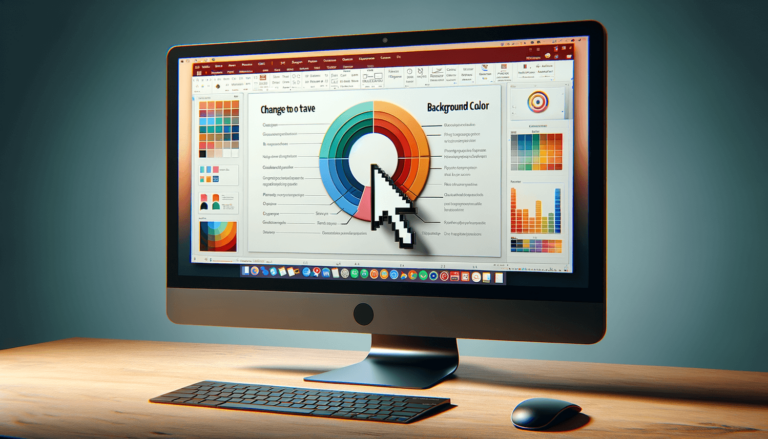
How to Change the Background Color in PowerPoint?
Written by: Bill Whitman
Last updated:

Changing the Background Color in PowerPoint
Changing the background color in PowerPoint slides can significantly impact your presentation’s look and feel. The process is simple and can be done in a few steps. First, right-click on the slide where you want to change the background color, and select ‘Format Background.’ A sidebar will appear, where you can choose ‘Solid Fill’ and then pick your desired color. Alternatively, for more color options, click on ‘More Colors.’ Apply your changes to the selected slide or all slides as needed.
Quick summary
- Right-click on the desired slide and select ‘Format Background.’
- Choose ‘Solid Fill’ and select your color or ‘More Colors’ for more options.
- Apply the changes to the current slide or all slides.
Changing the background color of your slides in PowerPoint can transform the overall aesthetic and mood of your presentation. This adjustment can be crucial for maintaining brand consistency, highlighting information, or simply making your presentation more visually appealing. At LearnPowerpoint.io, we believe in giving trusted advice to make your PowerPoint journey easy and effective. Here’s a deeper dive into everything you need to know about customizing your slide backgrounds.
Step-by-step Guide to Changing Background Color
To change the background color of a PowerPoint slide, follow these detailed steps:
- Open your PowerPoint presentation and navigate to the slide where you want to change the background color.
- Right-click on an empty area of the slide. In the context menu that appears, select ‘Format Background.’ This will open the Format Background pane on the right side of the PowerPoint window.
- Under the Format Background pane, select ‘Solid Fill.’ This option allows you to choose a solid color for your slide’s background.
- Click on the ‘Color’ button to display the color palette. Here, you can select your preferred color. If you don’t find the color you’re looking for, click ‘More Colors’ to access a wider color selection.
- Once you’ve chosen your color, you can decide whether to apply it to only the current slide or all slides in your presentation. To apply the color to all slides, click ‘Apply to All’ at the bottom of the Format Background pane.
- If you’re satisfied with your selection, close the Format Background pane by clicking the ‘X’ in the top right corner.
Additional Tips for Background Customization
Beyond just changing the color, PowerPoint offers several ways to customize your slide backgrounds for a more unique presentation. Here are some tips:
- Gradient Fill: Instead of a solid color, you can select ‘Gradient Fill’ in the Format Background pane. This option lets you create a gradient effect with multiple colors.
- Picture or Texture Fill: For a more visual background, choose ‘Picture or Texture Fill’ to insert a custom image or texture as your slide background.
- Pattern Fill: You can also opt for a patterned background by selecting ‘Pattern Fill.’ This feature offers various patterns and allows you to customize the foreground and background colors.
Remember, the background of your slides plays a vital role in the accessibility and readability of your content. When selecting colors or backgrounds, consider the contrast between the background and the text to ensure that your presentation is easily readable by all audience members.
At LearnPowerpoint.io, our goal is to help you make the most out of PowerPoint by providing trusted advice. Whether you’re changing a background color or customizing your presentation in other ways, understanding these basic yet powerful tools can greatly enhance the quality and effectiveness of your presentations.
Featured Posts
- No pillar pages found.








